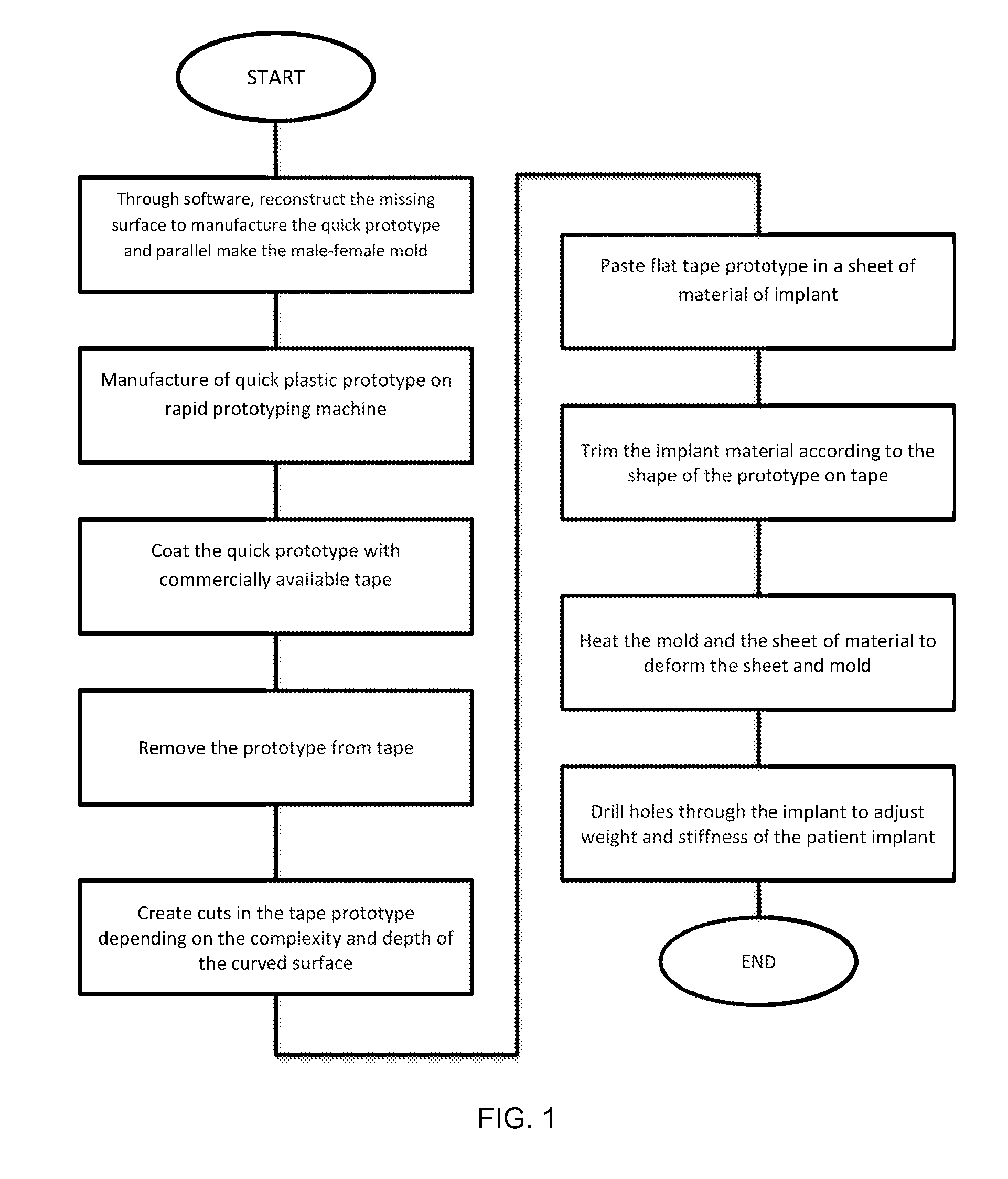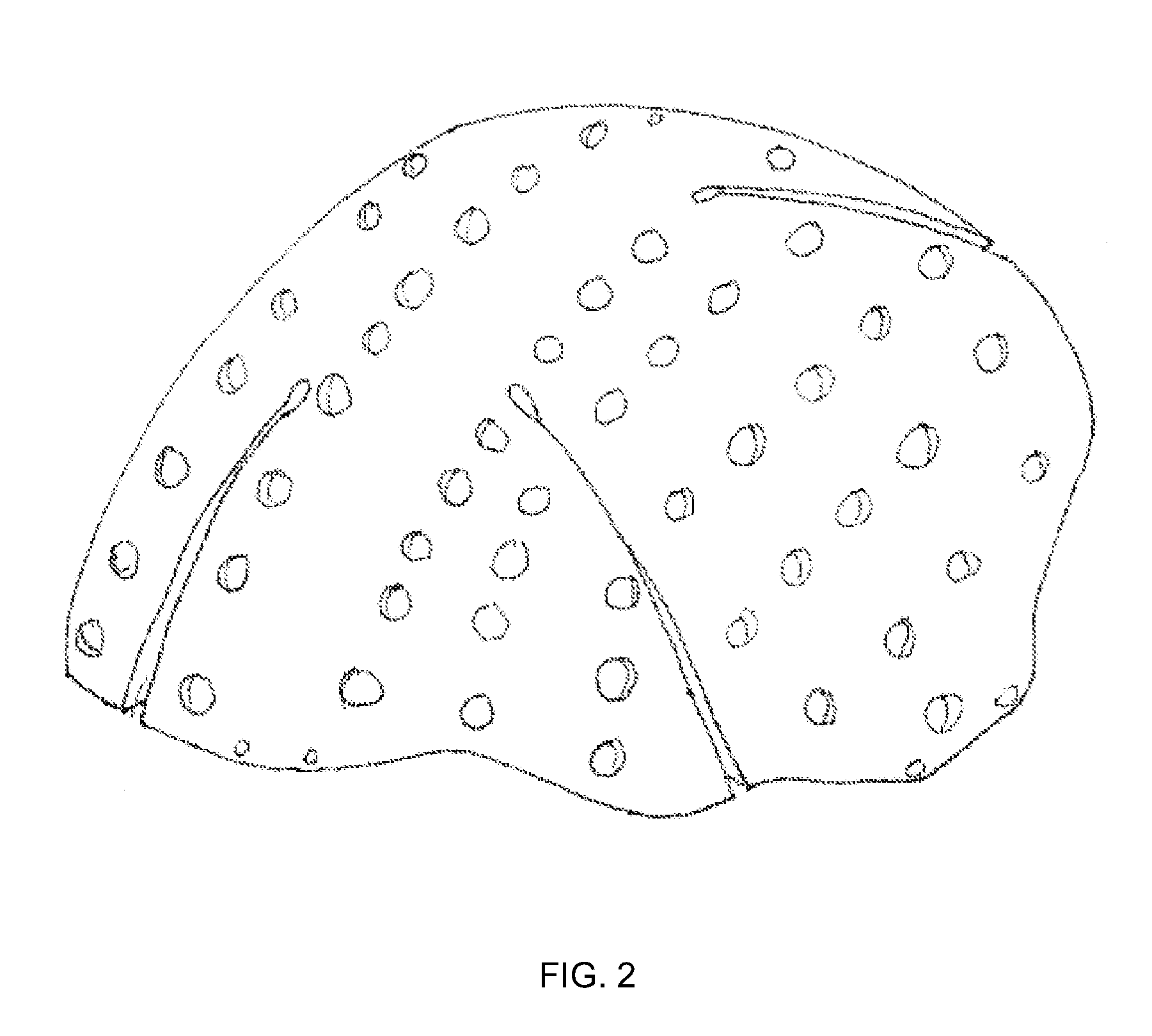Cost-effective method for manufacturing metal cranial prostheses
a metal cranial and cost-effective technology, applied in the field of manufacturing implantable prostheses, can solve the problems of increasing production and operation costs, unsatisfactory processing, and high temperature of molds,
- Summary
- Abstract
- Description
- Claims
- Application Information
AI Technical Summary
Benefits of technology
Problems solved by technology
Method used
Image
Examples
Embodiment Construction
[0035]An initial quick prototype is obtained with which the work will begin in order to obtain the final implant, wherein said quick prototype is manufactured in any plastic material, preferably ABS Acrylonitrile butadiene styrene, considering that plastic can be deformed at a temperature lower than the one required to deform a metal, such as titanium. Likewise, the quick prototype is carried out in a rapid prototyping machine commercially available.
[0036]Now, once the prototype in plastic is obtained, this is coated with any type of commercially available adhesive tape, in order to obtain a first implant on tape to be the basis for the manufacture in the final implant material. Thus, this plastic prototype must be tape coated, whereby at least one glued layer is disposed, in order to prevent the tape prototype from sagging when said layers of tape are removed from the plastic prototype and so the exact shape of the prosthesis to be implanted is obtained, which adapts to the patient...
PUM
| Property | Measurement | Unit |
|---|---|---|
| thickness | aaaaa | aaaaa |
| thickness | aaaaa | aaaaa |
| temperatures | aaaaa | aaaaa |
Abstract
Description
Claims
Application Information
 Login to View More
Login to View More - R&D
- Intellectual Property
- Life Sciences
- Materials
- Tech Scout
- Unparalleled Data Quality
- Higher Quality Content
- 60% Fewer Hallucinations
Browse by: Latest US Patents, China's latest patents, Technical Efficacy Thesaurus, Application Domain, Technology Topic, Popular Technical Reports.
© 2025 PatSnap. All rights reserved.Legal|Privacy policy|Modern Slavery Act Transparency Statement|Sitemap|About US| Contact US: help@patsnap.com



